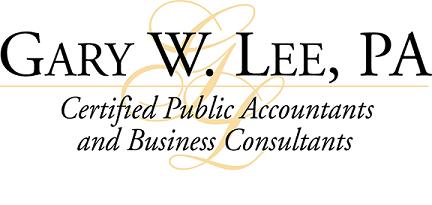Personal
07/10/2019
IRA Rollovers
“Suppose you’re getting ready to call it quits or sell your company. The good news is that you’ve accumulated a tidy nest egg in your company retirement plan. The bad news: You will owe a hefty tax bill if you take a lump-sum payout.
Strategy: Roll over the plan balance into an IRA. Assuming you meet certain requirements, you won’t owe any tax on the transfer. What’s more, the assets in your IRA can continue to grow free of tax until you’re ready to start taking withdrawals or you’ve reached a certain age. “ Small Business Tax Strategies, July 2019
Let us know how we can help you make the best decision for your next step in life.
06/20/2019
Be aware and protect yourself and your privacy:
Two new IRS impersonation telephone scams are on the agency’s radar.
1)In one, thieves posing as IRS employees tell victims they owe back taxes and must pay up fast or their Social Security numbers will be suspended or canceled.
2)The second involves the mailing of letters threatening liens or levies for unpaid taxes. The letters reference the “Bureau of Tax Enforcement,” which does not exist.
For more information and other scams to look out for, go here: https://www.irs.gov/newsroom/tax-scams-consumer-alerts
12/04/18
New Tax Rules for Individuals for 2018 
Personal exemption deductions have packed their bags and left the building! What used to be a $4,150 deduction for each dependent is no longer available. To compensate, the new law has increased the child tax credit from the 2017 amount of $1,000 to $2,000 ($1,400) is refundable. If your child is 17 or older, then they qualify for a $500 nonrefundable tax credit as well as other dependents. Families with non-child dependents take a hit here, as the $500 credit will not be as beneficial as the $4,150 exemption deduction it replaces. On the flip side, the standard deduction amounts have almost doubled from what they were in 2017: $24,000 for joint filers and surviving spouses, $18,000 for heads of household, and $12,000 for single individuals and those who are married but filing separately.
For those who itemize, other big changes resulting from the new tax law are as follows:
State and Local Income and Property Taxes. There is now a $10,000 limitation on these itemized deductions.
Mortgage Interest. If you took out a mortgage after December 14, 2017, the interest deduction is limited to the portion of the interest allocable to $750,000. In the case of acquisition indebtedness incurred before December 15, 2017, the limitation is the same as it was under prior law: $1,000,000. Also, generally no deduction is allowed for interest paid on home equity indebtedness, unless, it’s for home improvements.
Child and Dependent Care Expenses. You may be entitled to up to 35% of expenses, if you paid someone to take care of your child or a dependent while you were working or looking for work.
Medical, Dental, and Vision Expenses. For 2018, the 10% floor has been dropped to 7.5% of your adjusted gross income (AGI). This means that a deduction can be taken to the extent that your medical, dental, and vision expenses, exceed 7.5% of your AGI.
Casualty and Theft Losses. If you incurred a casualty loss in a declared disaster area (e.g. hurricane damage) it may be deductible. However, any other casualty loss or theft loss is not deductible.
Charitable Contributions. For those truly charitable folks, the maximum contribution percentage limit has been increased from 50% of your AGI to 60% for cash contributions to public charities.
Miscellaneous Itemized Expenses. These have been eliminated for tax years 2018 – 2025
Education-Related Expenses. For those who have student loan debt, a deduction of $2,500 for interest paid on a qualified student loan may be deductible. This deduction is phases out if your modified AGI is between $65,000 and $80,000 ($130,000 and $160,000 if filing a jointly).
Moving Expense Reimbursement. Starting in 2018, if you receive a reimbursement from your employer for moving expenses, the reimbursement is taxable income! The deduction is no longer available for moves taking place in years 2018-2025, unless the taxpayer is a member of U.S. Armed Forces on active duty.
Alternative Minimum Tax (AMT). There have been increases in the AMT exemption amounts as well as increases in the income level at which the exemption is phased out.
Distributions from a 529 plan. Previously, 529 distributions could only be used for higher education expenses. Now, you can use up to $10,000 in aggregate 529 distributions per year for elementary and secondary school tuition.
Don’t hesitate to get ahead on your tax planning! If you have any questions of your 2018 tax situation, please let us know.
8/29/18
 Tax Break for Charitable Contributions from an IRA
Tax Break for Charitable Contributions from an IRA
If you are age 70½ or older, you can transfer up to $100,000 per year from your traditional IRA directly to charity. Such charitable transfers count as part of your required minimum distribution (RMD) and are not included in your taxable income. The IRA-to-charity strategy can be a good way to get tax savings from charitable gifts for taxpayers not taking charitable write-offs because of higher standard deductions.
8/14/18
|
Take Your RMD like a Rock Star By Sarah Brenner, JD
Do rock stars have IRAs? If they do, like the rest of us mere mortals, they must take required minimum distributions (RMDs). The rules say RMDs must start for the year the IRA owner reaches age 70 ½. The first RMD can be delayed until April 1 of the following year. To calculate the RMD, the IRA owner will use their age on their birthday in the year for which the RMD must be taken. The RMD rules are tricky! Even though Steven and Ozzy will both celebrate their 70th birthdays in 2018, their RMDs will work very differently. Steven Tyler’s RMD Because Steven’s 70th birthday is in March, he will reach age 70 ½ in 2018. He must take an RMD for this year. His deadline for taking it will be April 1, 2019. He will calculate his first RMD using the age 70 because that is the age he attains on his birthday in the year for which he must take his RMD. Ozzy Osborne’s RMD For Ozzy, it will work differently because his 70th birthday is in the second half of the year. He will not reach age 70 ½ until 2019. Therefore, the first year for which he will need to take an RMD is next year, 2019. His deadline for his first RMD would be April 1, 2020. He will calculate his first RMD using the age 71 because that is the age he attains on his birthday in 2019, the first year he must take an RMD. Which Rock Star Are You? If you will be celebrating your 70th birthday in 2018, ask yourself which rock star are you? Are you like Steven Tyler, or are you like Ozzy Osborne? |
7/30/18
Auto Expenses - Business-Owned vs. Personal Owned
The following should be considered when deciding whether to have a business own the auto vs. owning it personally. Matters get complicated due to the auto being used for both business and personal.
There are two methods to choose from when it comes to deducting the business use of an auto if you own the auto personally; standard mileage rate vs. actual expenses.
- Standard Mileage Rate – will require that you track your mileage; date of trip, business destination and business purpose, in a timely fashion and apply the standard mileage rate to the business portion of these miles. Mileage tracking has been simplified with the use of mobile apps such as Trip Log, MileBug, MileIQ, etc. The standard mileage rate is established to include all of the actual expenses and is adjusted annually.
- Actual Expenses – will require you to track and document your expenses; gas & oil, maintenance & repairs, insurance, loan or lease payments, licenses and registration fees, depreciation, etc., in addition to tracking mileage. You would then apply the business use percentage (business miles / total miles) to these expenses to determine your deduction.
If the auto is owned by the business the business must use the actual expense method. The business is then required to track the personal use of the vehicle and include this value in the compensation to the users of the auto by adding this benefit to their W-2. There are difference options available for the business to comply with this requirement.
If you want to use the standard mileage rate for a car you own, you must choose to use it in the first year the car is available for use in your business. Then, in later years, you can choose to use either the standard mileage rate or actual expenses.
Pros of using Standard Mileage Rate:
- Easy way to get a deduction for business usage of a vehicle,
- Flexibility to switch between methods if you use this the first year,
- Simple to track for deduction: keep a mileage log of business, personal and commuting drives.
Pros of using Actual Expense Method:
- Potentially larger deduction, especially if you have a more expensive vehicle,
- Potentially larger deduction if you don’t have a lot of miles per year.
Contact us with your questions or concerns.
7/25/18
Excess IRA Contributions
Not all contributions to IRAs belong there. When a contribution is not permitted in an IRA, it is an excess contribution and needs to be fixed. Here are 7 ways an excess IRA contribution can happen to you:
1. Blowing Past the Annual Limit
2. Insufficient Earned Income
3. Exceeding the Roth IRA Income Limits
4. Too Old for a Traditional IRA
5. Failed Rollovers
6. RMDs Not Eligible for Rollover
7. Inherited IRA Mistakes
Fixing Excess Contributions
Knowing these conditions is the first step in avoiding these mistakes. But, if despite your best efforts, an excess contribution occurs, it needs to be fixed. It will not go away or fix itself. An excess contribution will be subject to penalties each year it remains in the IRA. The good news is that excess contributions can be corrected and often without penalty. If you need assistance with fixing an excess contribution, give us a call.



